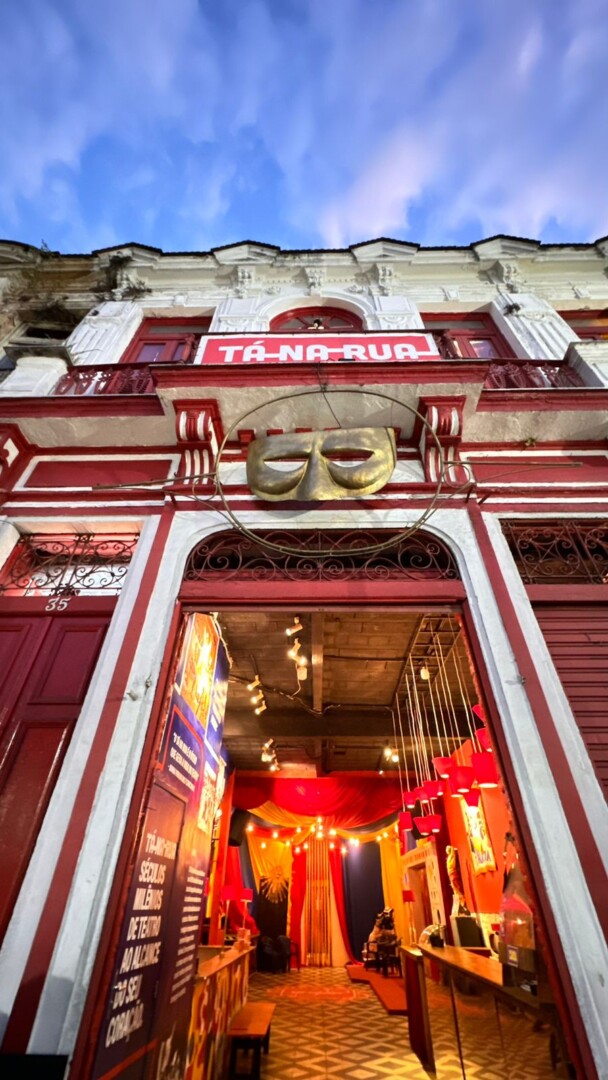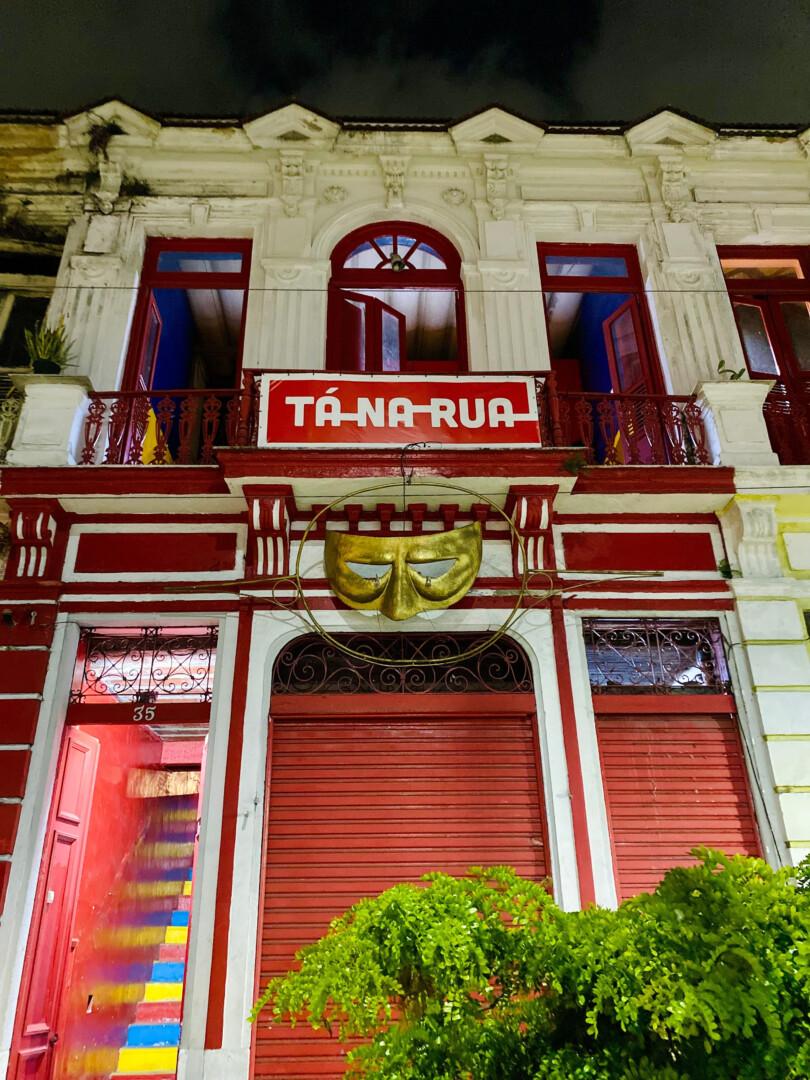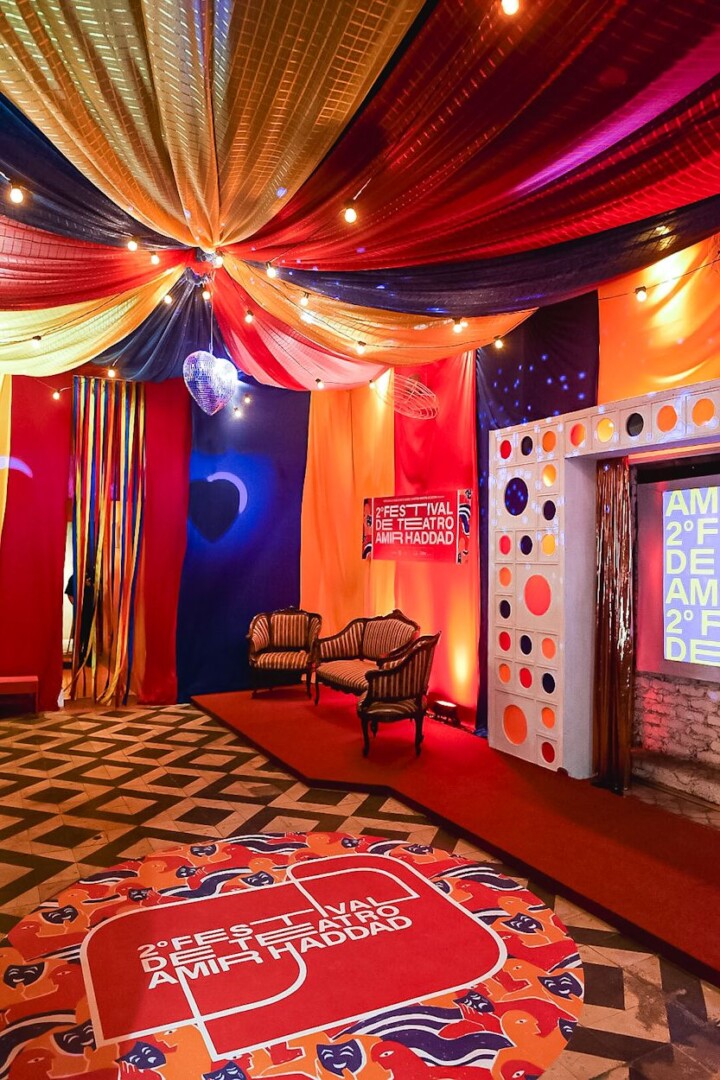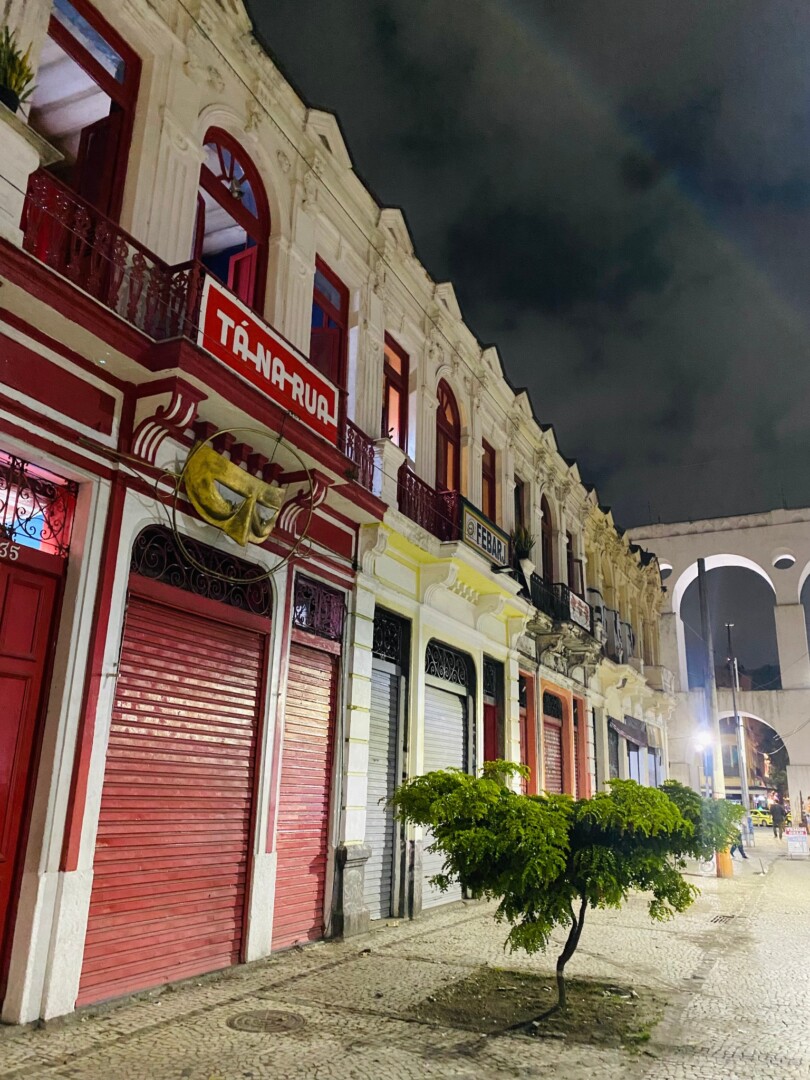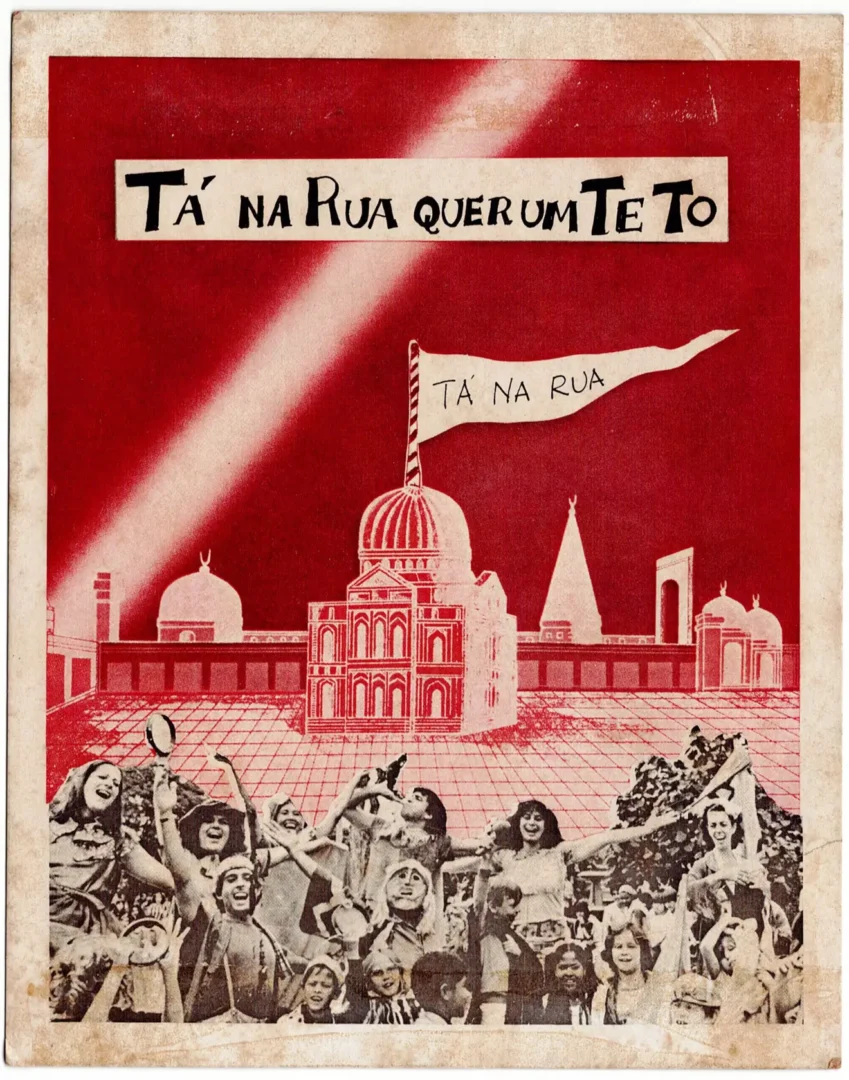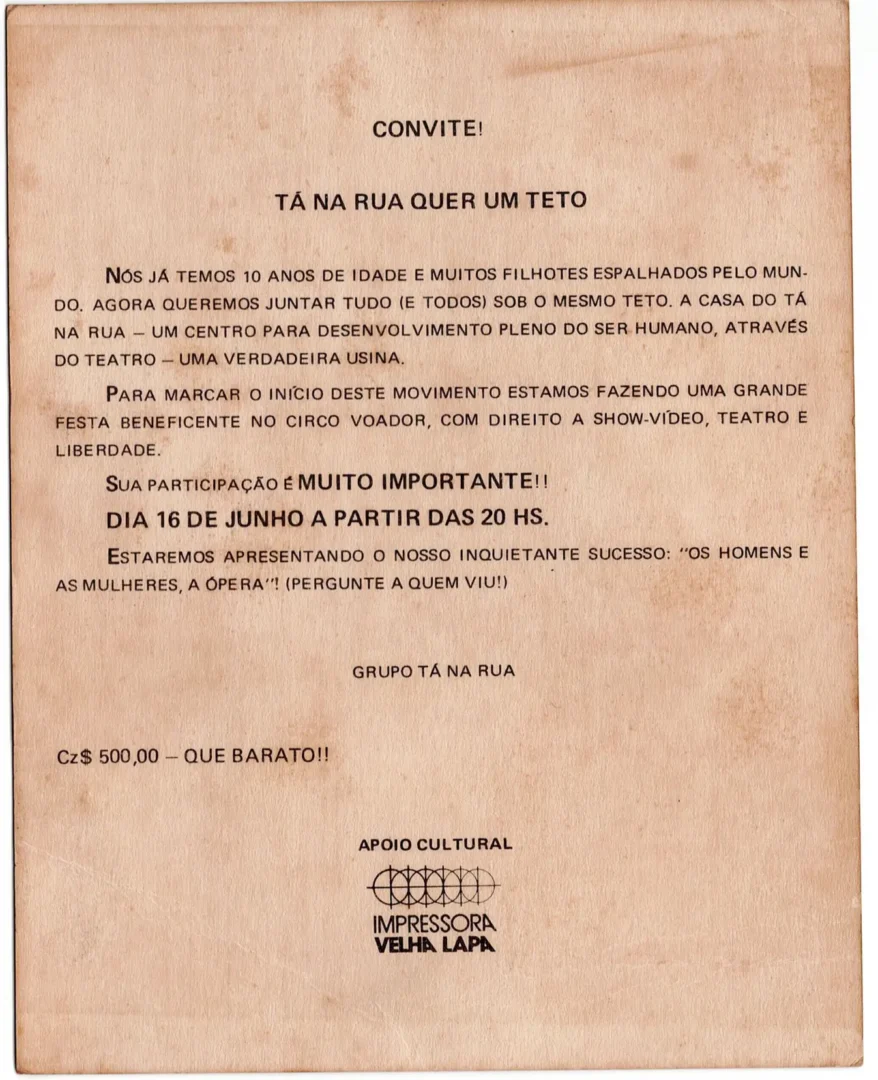The year was 1994. After a long search for a space to host its work, the Tá Na Rua Group took up residence in a townhouse at Av. Mem de Sá, 35, in Lapa, establishing the Tá Na Rua House Cultural Center—simply known as “The House” to all.
The Tá Na Rua House is part of Lapa’s Cultural Corridor, a project for revitalization and public safety through culture, implemented by then-Governor Leonel Brizola and his Secretary of Security, Nilo Batista. This project aimed to recover degraded areas of the city by transforming them into cultural production hubs, betting on the power of art as a tool for pacification and social transformation.
For two years, the window of Tá Na Rua’s townhouse was the only source of light in Lapa’s dense darkness… On the night of the ceremony to hand over the houses, I dared to make a prophecy, shouting into the night ahead of me, dark, full of stories and ghosts. I said then that that small light was the symbol of a new light that would shine on the city, on the region, and also on our cultural identity and life… Nilo Batista knew that cultural life dissipates violence and can disarm the violent. (Amir Haddad)
This milestone symbolized not only the achievement of a physical space but also the consolidation and strengthening of a language that seeks to reclaim the ancestry of theater, which is, by its origins, a Public Art, integrated into the living fabric of the city and the daily lives of its people.
Establishing its headquarters allowed Tá Na Rua to more structurally develop its activities: rehearsals, workshops, celebrations, gatherings, and performances of its artistic productions, all hosted in the two spacious halls that make up The House. Additionally, its location in the heart of Lapa, a traditional bohemian neighborhood in downtown Rio de Janeiro, provides the group access to the large square nearby, which serves as a prime venue for classes, rehearsals, and performances.
Today, The House also realizes an old dream of the group: the establishment of the Escola Carioca do Espetáculo Brasileiro (Carioca School of Brazilian Performance), promoting not only the training of artists but also cultural events that reflect the diversity and breadth of popular culture.
It is impossible to create something lasting in theater, with a group, without having a roof over your head. A place where you can invest, repeat, experiment, create a collective consciousness of investigation, and observe the consequences of your work. (Amir Haddad)
Furthermore, complementing its role as a hub for cultural reflections in Rio, The House has become an important space for social and political discussions, serving as the headquarters of the Fórum Carioca de Arte Pública (Carioca Public Art Forum) since 2012.
